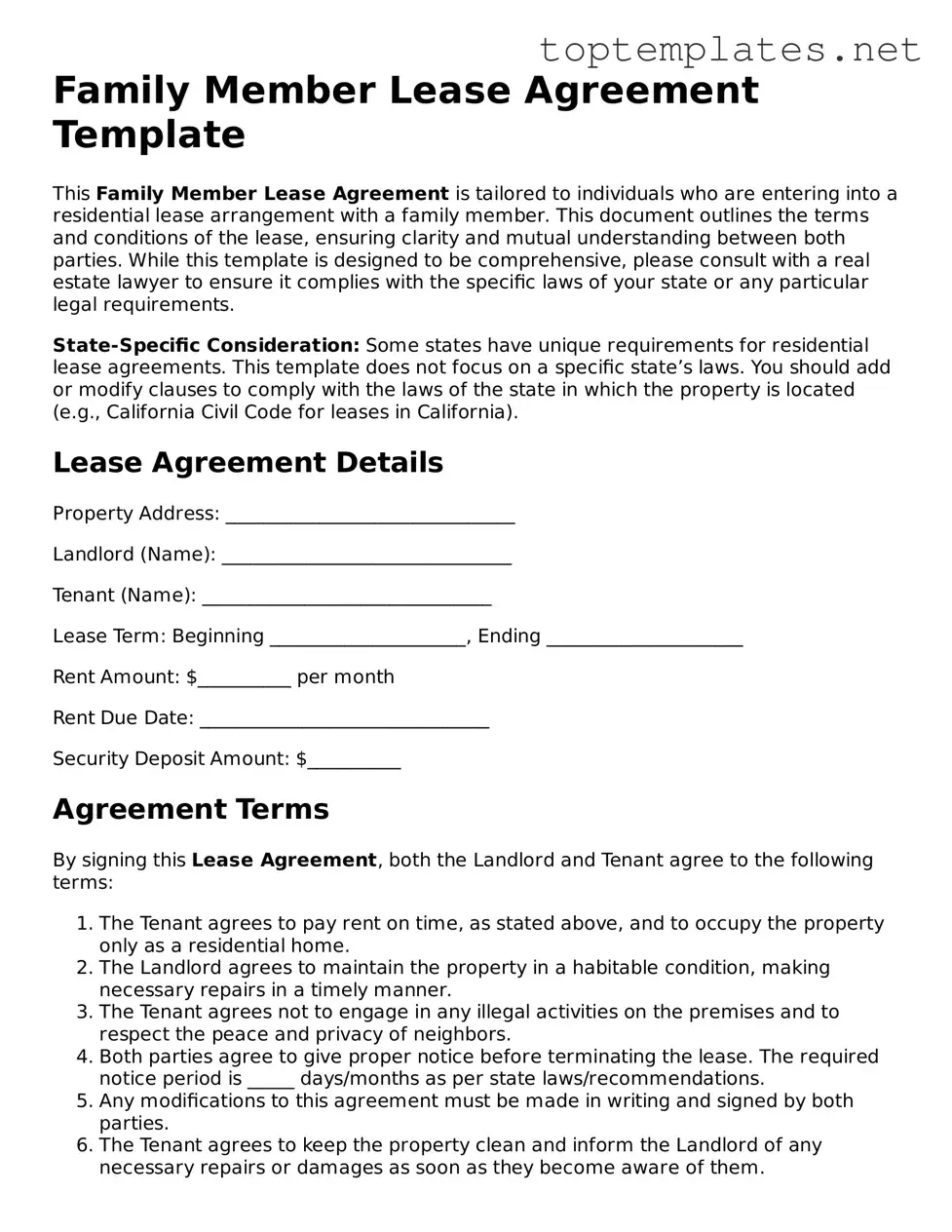Family Member Lease Agreement Template
This Family Member Lease Agreement is tailored to individuals who are entering into a residential lease arrangement with a family member. This document outlines the terms and conditions of the lease, ensuring clarity and mutual understanding between both parties. While this template is designed to be comprehensive, please consult with a real estate lawyer to ensure it complies with the specific laws of your state or any particular legal requirements.
State-Specific Consideration: Some states have unique requirements for residential lease agreements. This template does not focus on a specific state’s laws. You should add or modify clauses to comply with the laws of the state in which the property is located (e.g., California Civil Code for leases in California).
Lease Agreement Details
Property Address: _______________________________
Landlord (Name): _______________________________
Tenant (Name): _______________________________
Lease Term: Beginning _____________________, Ending _____________________
Rent Amount: $__________ per month
Rent Due Date: _______________________________
Security Deposit Amount: $__________
Agreement Terms
By signing this Lease Agreement, both the Landlord and Tenant agree to the following terms:
- The Tenant agrees to pay rent on time, as stated above, and to occupy the property only as a residential home.
- The Landlord agrees to maintain the property in a habitable condition, making necessary repairs in a timely manner.
- The Tenant agrees not to engage in any illegal activities on the premises and to respect the peace and privacy of neighbors.
- Both parties agree to give proper notice before terminating the lease. The required notice period is _____ days/months as per state laws/recommendations.
- Any modifications to this agreement must be made in writing and signed by both parties.
- The Tenant agrees to keep the property clean and inform the Landlord of any necessary repairs or damages as soon as they become aware of them.
- The Landlord agrees to return the Security Deposit within _____ days after the lease ends, minus any deductions for damages beyond normal wear and tear.
Additional Terms
Please include any additional terms or conditions relevant to your specific situation here:
________________________________________________________________
________________________________________________________________
Signatures
This agreement is entered into on this _____ day of _______________, 20___.
Landlord Signature: _______________________________
Landlord Printed Name: ___________________________
Tenant Signature: _______________________________
Tenant Printed Name: ___________________________
